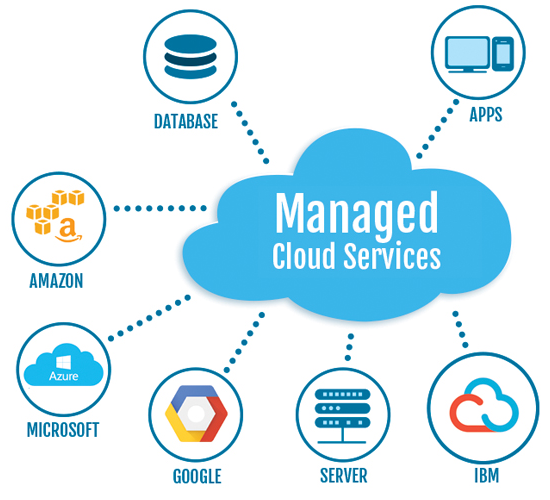Simplify Your Facilities With Cloud Provider
As organizations navigate the ever-evolving landscape of innovation and information monitoring, the function of cloud solutions in simplifying framework has come to be increasingly popular. The appeal of structured processes, improved performance, and improved source appropriation via cloud remedies is obvious. The trip towards a more agile and cost-effective IT infrastructure involves more than just moving to the cloud. It requires a strategic strategy and a deep understanding of the nuances of cloud fostering. Exactly how can services successfully navigate this transition and truly unlock the potential of cloud solutions for streamlining their framework?
Benefits of Cloud Services
Cloud services offer a structured method to managing IT facilities, giving companies with cost-efficiency, scalability, and adaptability. One of the vital advantages of cloud services is the scalability they provide. Organizations can conveniently scale their sources up or down based upon demand, guaranteeing they just pay for what they utilize. This versatility is particularly advantageous for services with varying needs or those experiencing development.
Additionally, cloud solutions eliminate the need for organizations to buy costly equipment and software application. This cost-efficiency is a significant advantage, specifically for small to medium-sized business aiming to decrease upfront costs. By utilizing cloud solutions, companies can access top quality IT resources without the hefty cost related to traditional facilities setups.
Additionally, cloud services give services with the adaptability to access their information and applications from anywhere with an internet link. This level of availability boosts collaboration amongst groups, enables remote work, and boosts overall performance. The adaptability used by cloud services equips businesses to adjust promptly to altering market conditions and consumer demands.
Expense Financial Savings and Scalability
Along with the operational advantages highlighted previously, the integration of cloud solutions right into a company's framework generates substantial expense savings and improved scalability. Cloud services use a pay-as-you-go version, permitting businesses to range sources up or down based upon existing requirements, consequently preventing the expenses related to preserving excess capacity. This flexibility makes it possible for firms to adjust promptly to fluctuating needs without sustaining unneeded expenses.
Furthermore, cloud services remove the demand for in advance investments in hardware and software, decreasing funding expenditures. Operating costs are additionally decreased as firms no much longer need to manage and keep physical web servers, causing lower power consumption and IT staffing costs. Furthermore, cloud services supply automatic updates and maintenance, making sure that the infrastructure stays up-to-date and safe and secure without calling for hands-on treatments.
Boosted Protection Procedures
Carrying out rigorous security actions is extremely important when integrating cloud services into a firm's framework to secure delicate data and make sure compliance with sector guidelines. Cloud service companies offer boosted protection attributes such as data security, firewall software security, and multi-factor authentication to reduce cybersecurity risks.
Furthermore, normal safety audits and compliance assessments help ensure and recognize vulnerabilities adherence to sector requirements. Firms can additionally take advantage of features like automated safety updates and real-time hazard monitoring given by cloud service carriers. By prioritizing safety procedures and staying aggressive in dealing with potential threats, organizations can confidently utilize cloud services while shielding their beneficial data from unapproved access or breaches.
Transitioning to Cloud Infrastructure
To efficiently integrate cloud services right into a company's framework, a structured strategy that deals with the shift towards cloud-based options is crucial. Transitioning to cloud framework includes mindful preparation and execution to make certain a smooth migration procedure. The initial step is to evaluate the existing facilities and establish which systems and applications appropriate for migration to the cloud. This examination should think about aspects such as information sensitivity, conformity needs, and efficiency needs.
When the evaluation is total, a migration technique ought to be established. This technique ought to browse around here outline the timeline, resources, and responsibilities for moving each component to the cloud. It is important to interact this plan clearly to all stakeholders to ensure placement and decrease disturbances throughout the shift.
During the movement screening, process and monitoring are important to determine and deal with any issues without delay. Normal checkpoints must be established to track development and make necessary changes. In addition, training for staff members on making use of cloud solutions must be supplied to guarantee a successful transition and maximize the advantages of the new infrastructure.
Ideal Practices for Cloud Adoption
Successful fostering of cloud services depends upon the calculated placement of service purposes with technological capabilities and business preparedness. To guarantee a smooth change to the cloud, organizations need to start by performing an extensive analysis of their current facilities and recognizing which workloads are best fit for cloud movement. It is important to involve essential stakeholders from various discover this departments in the decision-making procedure to obtain buy-in and deal with any kind of concerns early.
Another finest practice for cloud fostering is to prioritize protection and compliance. Organizations needs to carefully examine the protection measures used by cloud solution companies and make sure that their information is safeguarded according to market requirements and governing requirements. Executing durable data security, access controls, and regular safety and security audits can assist minimize threats related to cloud fostering.

Conclusion
As organizations navigate the ever-evolving landscape of innovation and information administration, the duty of cloud solutions in streamlining facilities has actually ended up being progressively famous - universal cloud Service. Just how can businesses effectively browse this transition and genuinely unlock the potential of cloud solutions for streamlining their infrastructure?
Cloud services provide a structured method to handling IT infrastructure, giving businesses with adaptability, scalability, and cost-efficiency. By utilizing cloud solutions, businesses can access see this site premium IT sources without the large cost tag connected with standard facilities setups.
To ensure a smooth transition to the cloud, companies need to begin by conducting a thorough analysis of their present facilities and determining which work are best matched for cloud movement.
 Amanda Bynes Then & Now!
Amanda Bynes Then & Now! Richard "Little Hercules" Sandrak Then & Now!
Richard "Little Hercules" Sandrak Then & Now! Christina Ricci Then & Now!
Christina Ricci Then & Now! Loni Anderson Then & Now!
Loni Anderson Then & Now! Christy Canyon Then & Now!
Christy Canyon Then & Now!